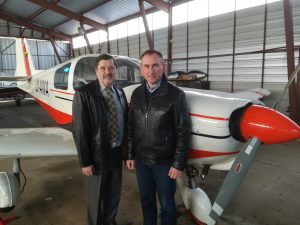Researchers from Kaunas University of Technology, Lithuania have developed a method and a device which can calculate a safe distance for the take-off and thus diminish the probability of aircraft accidents. The invention has been granted a patent from the US Patent Office.
Aviation history is written in blood, as the old saying goes – a great many of the aircraft safety regulations grew out of somebody else’s tragedy. As recent data shows, the vast majority of fatal air accidents involve general aviation aircraft, especially those with a maximum take-off mass of less than 2,250 kg. In 2022, these accidents accounted for 83% of all fatalities in the air. While more than half of all aircraft accidents occur during landing, the accidents during take-off are in second place.
Small planes are susceptible to adverse weather conditions
Runway phases of the flight require more activity from the pilots than any other. For the takeoff, several aspects are critical – the length of the runway, the speed, the altitude and the weather. These aspects are also interconnected – if the runway is too short, the plane might not reach sufficient speed for the take-off. On the other hand, the runway may be of sufficient length but the opposing force of the wind is so strong that it slows the aircraft down.
“Small planes are usually those which are affected by the adverse weather conditions,” says Kaunas University of Technology (KTU) Emeritus Professor Vytautas Dumbrava, a co-author of the invention aimed at improving aircraft safety during a take-off.



